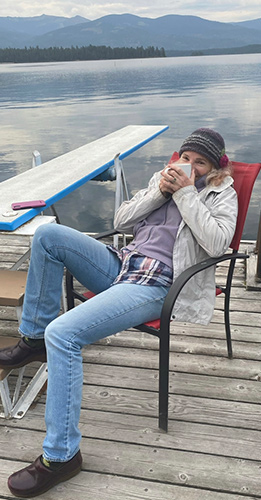Fat transfer to the breast: Seattle Plastic Surgeon adds her two cents worth.
One of the hot topics at the annual meeting of the American Society for Aesthetic Plastic Surgery(ASAPS) in Boston which I attended last week was fat grafting to the breast. This procedure has a very interesting history. Back when the earth was cooling and I was training to become a plastic surgeon (1983-1991), fat injections were considered fringe surgery and fat injections to the breast were for all practical purposes panned by the American Society of Plastic Surgeons (ASPS) and ASAPS. Fat injections to the breast were considered ineffective and dangerous. Well, that was then and this is now.
Fat grafting is now a well established procedure that has been used for facial rejuvenation, hand rejuvenation, the treatment of liposuction divots, buttock enlargement and a few other indications. Much of the early work done with fat grafting was performed by Dr. Richard Ellenbogen in L.A. and Dr. Sydney Coleman in New York and these two doctors were subject to ridicule and disbelief for several years. I remember in 1993, when I took my plastic surgery board exams, the correct answer to any question about fat grafting was that it didn’t work. That is not the correct answer any more.
Fat grafting to the breast started with surgeons, myself included, using fat around the periphery of a reconstructed breast. For example, if there were contour defects at the edges of a breast reconstructed with an implant, some fat would be used to smooth that area out. Then we started using it for patients who had thin areas anound the breast following cosmetic breast augmentation.
Now we are using fat injected into the breast itself for breast enhancement. After taking several instructional classes on this topic in Boston, I am convinced that this is an appropriate and safe procedure for a very select group of patients.
Fat injection, at least currently, will not acheive the same volume of enlargement that implants can. Most fat injected breasts go up only one cup size. That eliminates a lot of ladies wanting to go a lot larger. One of the doctors who spoke in Boston (and who has the most experience with cosmetic fat transfer to the breast) still uses implants in 90% of the patients who present to him for breast enhancement and uses fat in only 10%.
For the best results in patients with very tight breasts and chest tissue, it is necessary for the patient to undergo breast expansion to stretch the breast and skin and to increase the breast vascularity prior to the fat transfer. This is done using a gigantic breast pump called the Brava System.
They should have called it the Brave System because it takes a brave lady to strap one of these babies on and then go out grocery shopping. The plastic surgeons who have the best results in thin, tight patients with fat grafting have their patients wear the Brava 10 hours a day for about 4 weeks. This is no small task. This Brava requirement also eliminates some patients wanting fat grafting. The experts (and who am I to question them?) tell these patients who want fat grafting “no Brava, no breasts”.
For patients who have experienced breast atrophy following breast feeding or weight loss, the tissues are loose and this preoperative stretching is not as important. These patients will likely do okay without the Brava.
My week in Boston at the ASAPS meeting really opened my mind to this new way to enhance the breast and I am looking forward to offering this procedure to selected patients. But remember, if you are “tight” – “no Brava, no breasts”.
Thanks for reading! Dr. Lisa Lynn Sowder




 @lisalynnsowder
@lisalynnsowder
